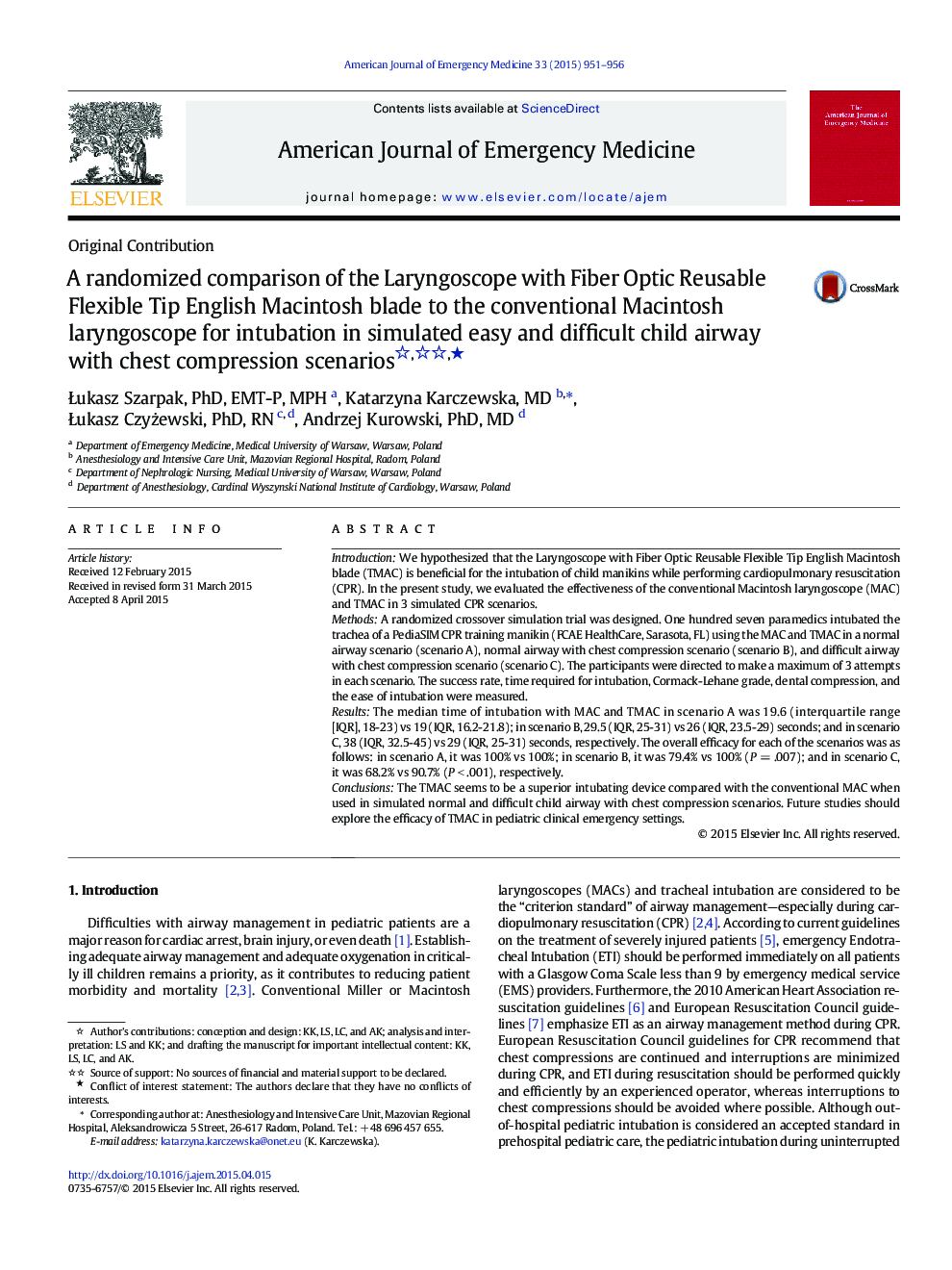| کد مقاله | کد نشریه | سال انتشار | مقاله انگلیسی | نسخه تمام متن |
|---|---|---|---|---|
| 6079975 | 1588104 | 2015 | 6 صفحه PDF | دانلود رایگان |

IntroductionWe hypothesized that the Laryngoscope with Fiber Optic Reusable Flexible Tip English Macintosh blade (TMAC) is beneficial for the intubation of child manikins while performing cardiopulmonary resuscitation (CPR). In the present study, we evaluated the effectiveness of the conventional Macintosh laryngoscope (MAC) and TMAC in 3 simulated CPR scenarios.MethodsA randomized crossover simulation trial was designed. One hundred seven paramedics intubated the trachea of a PediaSIM CPR training manikin (FCAE HealthCare, Sarasota, FL) using the MAC and TMAC in a normal airway scenario (scenario A), normal airway with chest compression scenario (scenario B), and difficult airway with chest compression scenario (scenario C). The participants were directed to make a maximum of 3 attempts in each scenario. The success rate, time required for intubation, Cormack-Lehane grade, dental compression, and the ease of intubation were measured.ResultsThe median time of intubation with MAC and TMAC in scenario A was 19.6 (interquartile range [IQR], 18-23) vs 19 (IQR, 16.2-21.8); in scenario B, 29.5 (IQR, 25-31) vs 26 (IQR, 23.5-29) seconds; and in scenario C, 38 (IQR, 32.5-45) vs 29 (IQR, 25-31) seconds, respectively. The overall efficacy for each of the scenarios was as follows: in scenario A, it was 100% vs 100%; in scenario B, it was 79.4% vs 100% (P = .007); and in scenario C, it was 68.2% vs 90.7% (P < .001), respectively.ConclusionsThe TMAC seems to be a superior intubating device compared with the conventional MAC when used in simulated normal and difficult child airway with chest compression scenarios. Future studies should explore the efficacy of TMAC in pediatric clinical emergency settings.
Journal: The American Journal of Emergency Medicine - Volume 33, Issue 7, July 2015, Pages 951-956